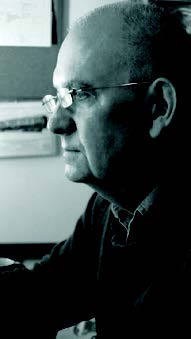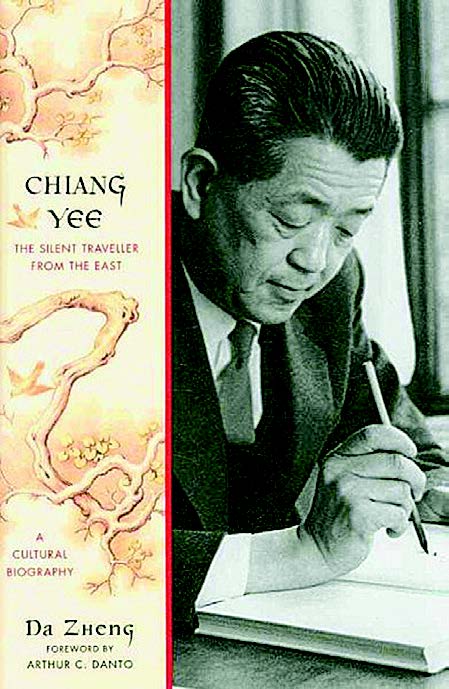In the preface to his biography of Chiang Yee, the author of The Silent Traveller travelogues, Da Zheng draws attention to the distinctive cover designs of the publications pointing out that “few writers were simultaneously accomplished artists who contributed to and designed their own book covers, let alone in a Chinese painting style that included Chinese calligraphy.” The books feature coloured illustrations, line drawings, and poems written in Chinese calligraphy with an English translation. They describe Chiang Yee’s cultural encounters in a unique portrayal of English landscape and society with comparisons with his homeland, Huangmei County, Hubei Province, China. His writing is representative of those who have left home in a search for cultural interactions beyond the comfort of familiarity thereby confronting displacement and different values and beliefs. It was Chiang Yee’s firm belief however that “there is no fundamental difference between any of the human races of the world” and advocated a better understanding between the East and the West. He explained and expounded on cultural issues such as ethnicity, history, and material practices where such issues were mutually often misconstrued and misunderstood. He asserted that “There is no difference between the West and the East in the appreciation of beauty and the longing for artistic expression.”
Chiang Yee had left China arriving in London with only five English words in his vocabulary but worked hard to improve his language skills and academic knowledge. His diligence finally paid off when in January, 1934, he became a student at the London School of Economics at the University of London. It was there that he made the acquaintance of Stewart Lockhart, an expert in Chinese cultural history, who invited him to take up the position of lecturer at the Chinese School of Oriental Studies also at London University.
Chiang Yee had been living in London for three years when he began work on a book which included his observations of everyday life and customs titled The Silent Traveller in London. In the first part “London Scene’ he focuses on the natural aspects of the city including its parks and walkways which he visited in all weathers. In ‘London Life’ he describes miscellaneous subjects such as children, men, women, food, teatime, books, plays, and films.
Da Zheng observes that “The book, though manifestly an account of his impression of the city, is essentially a comparison between English and Chinese cultures.” Yee acknowledged that, as a Chinese, he was “bound to look at many things from a different angle,” yet asserting that there was a commonality between nationalities: “They may be different superficially, but they eat, drink, sleep, dress, and shelter themselves from wind and rain in the same way. In particular their outlook on life need not vary fundamentally.” For readers in England, Chiang Yee’s observations were unique in that they came from someone from an enigmatic culture which hitherto had only been portrayed by European writers in many cases erroneously. Chiang Yee’s descriptions were not only accurate but amusing, exposing many of the foibles and eccentricities of English customs and behavior.
The peace and tranquility that Chiang Yee had enjoyed since taking up residence in London was interrupted by the outbreak of the Second World War. The turmoil in Europe mirrored for him the ravages that had beset his homeland under the Japanese occupation. He himself narrowly escaped death when his apartment was bombed while he was fortunately out of the city lecturing in Oxford. Undeterred, he began working on a second edition of The Silent Traveller in London which is a valuable record of his impressions of the city during the first two months of the war. This time he focused on “minute matters” such as the unexpected beauty of the black-out for residents who would appreciate the sight of the moon, even the mystical qualities of the balloon barrage.
Da Zheng, Chiang Yee’s only biographer describes his first encounter with the Silent Traveller which happened by coincidence when he noticed a copy of The Silent Traveller in Boston on the coffee table of an American friend in 1986. The author, then a professor of English at Suffolk University was inspired to chronicle the life of his compatriot. It is to be hoped Da Zheng’s biography will become a staple for the coffee table and stimulate further interest in the confluence of East and West through travel writing. Four of Chiang Yee’s Silent Traveller books – London, Oxford, Edinburgh, and Lakeland – are back in print and popular. There have been a number of critical studies of Chiang Yee’s travel writing, poems, and artwork with the China Institute in New York having organized a symposium celebrating his remarkable literary accomplishments and significant role as a twentieth-century cultural interpreter.
Special Column

|
CHIANG YEE THE SILENT TRAVELLER FROM THE EAST: A CULTURAL BIOGRAPHY

▸ Chiang Yee: The Silent Traveller from the East
Author:Da Zheng
Publishing House:Rutgers University Press (2010)
ISBN-10: 0813546931
ISBN-13: 978-0813546933


